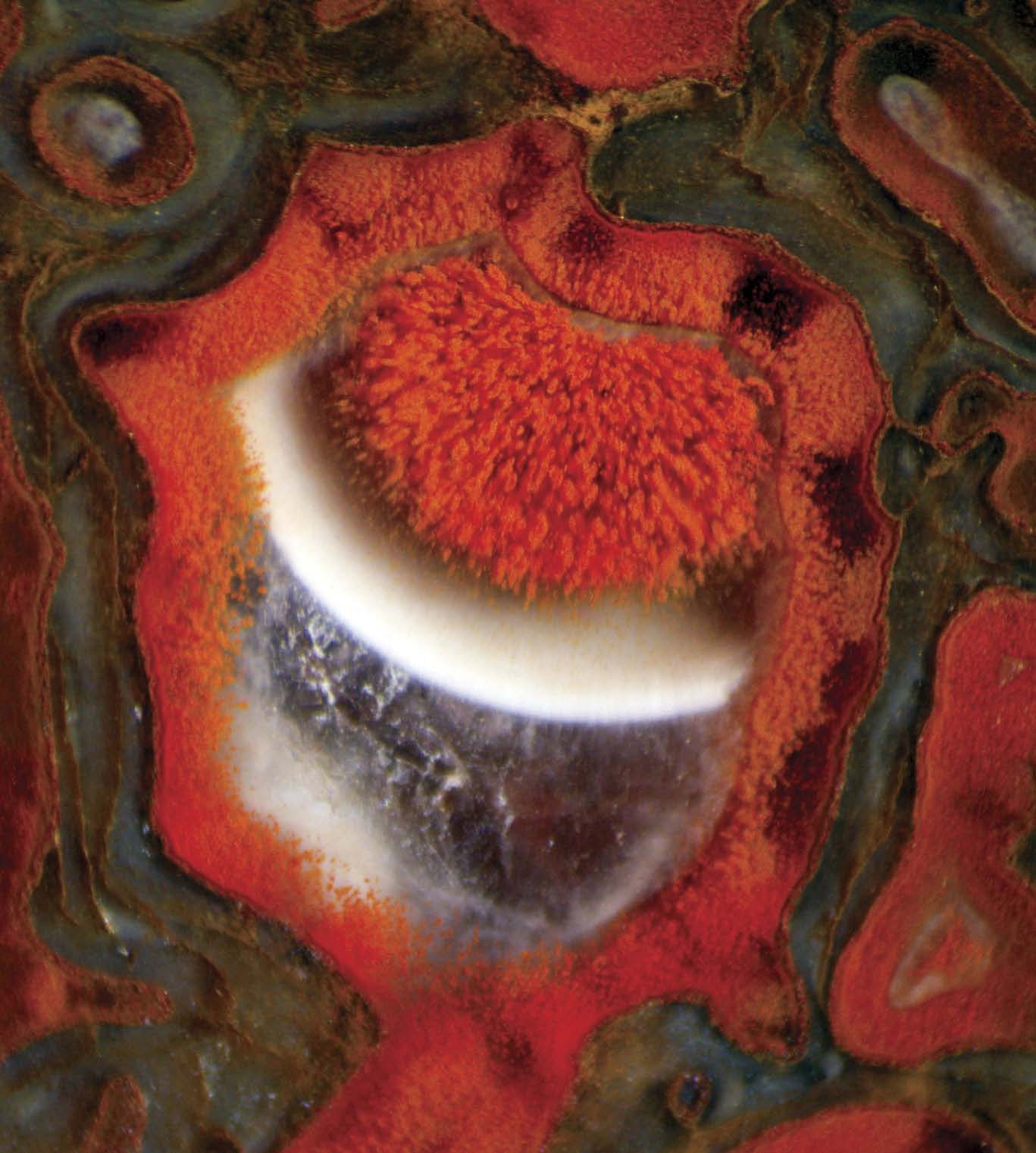STORY AND PHOTOS BY JOSEPH DEHMER

Magnified view of a single spherulite with a shag interior and white fibrous outer layer.
Dinosaurs have fascinated people of all ages for centuries. Their petrified bones have written the story of this diverse radiation of “terrible lizards,” sometimes titanic in size, and ultimately vanishing from the Earth 65 million years ago, leaving behind birds as the only genetic progeny of their 200 million-year reign. Fairly recently, petrified dinosaur bone has been found to provide an added bonus to the agate lover as a host to agates in miniature, close-packed nodules – the remnants of biological cells. The agates form in the individual cells of bone, whose cell walls preserve the shape of the cell after the biological cell had decayed. Over time, the cells become, in effect, very small nodules that can accumulate dissolved silica and begin the process of agate genesis. The physical size of the cell has two consequences: First it can generate a high density of independent agates (cells); and, second, it impacts the course of development of some agate features.